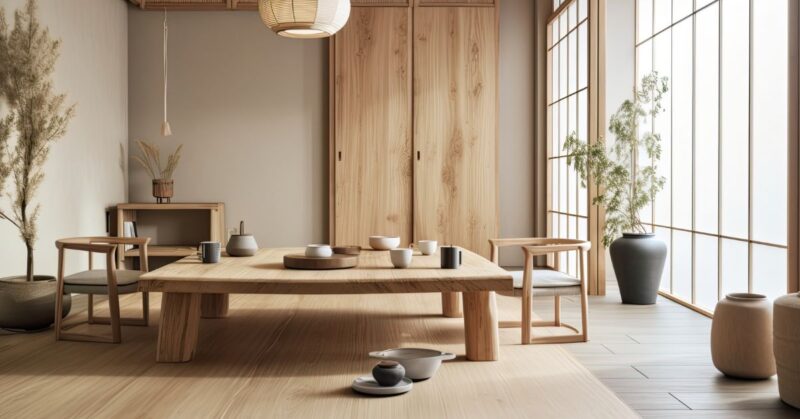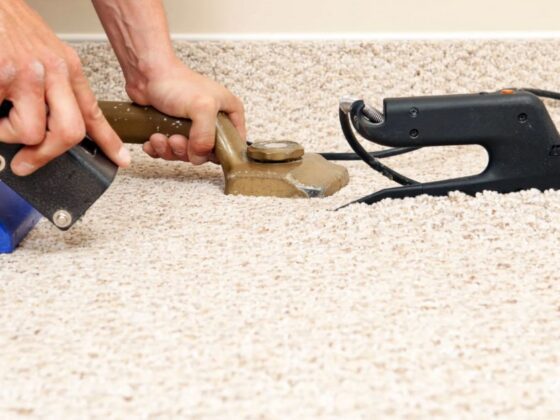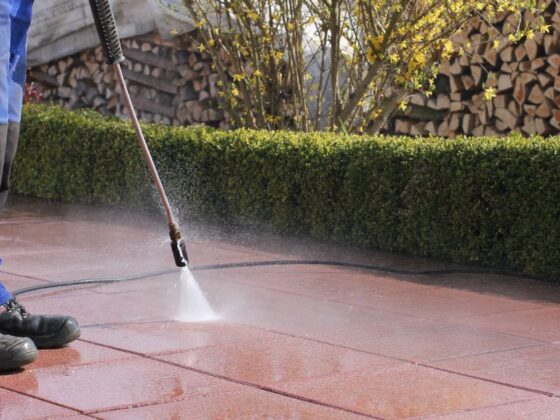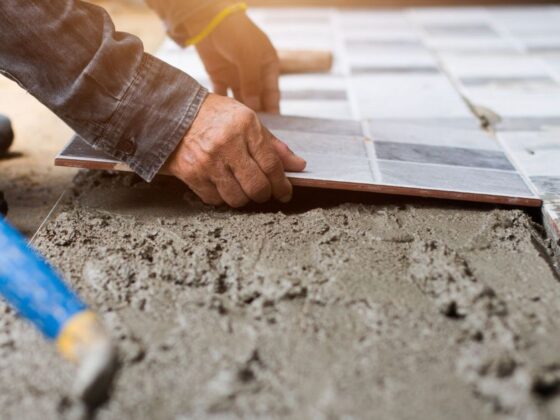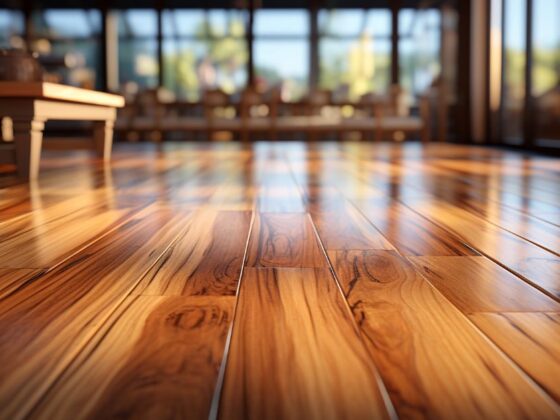If you’re looking to incorporate Japanese-infused interior design style into your living spaces, consider Wabi-Sabi Interior Design. This design features authenticity, simplicity, natural beauty, and imperfection. Let’s discuss more briefly What Is Wabi-Sabi Interior Design, its key features, and why you should consider it for your home’s interior styling.
What Is Wabi-Sabi Interior Design?
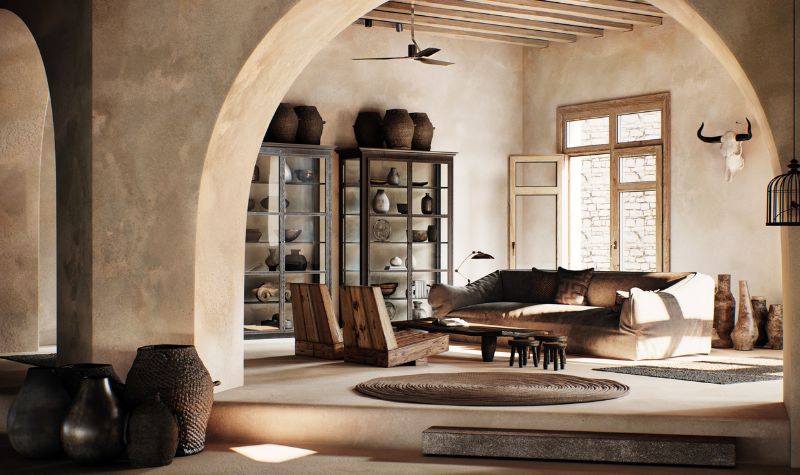
Wabi Sabi is a captivating interior design style that has recently gained popularity and originated from Japan, while rooted in Zen Buddhism. However, this interior design has been around for centuries. This design purely focuses on unglazed and unpolished finishes, rustic simplicity, organic and sustainable materials, raw, irregular, and flawed textures, while highlighting the stories behind textures and surfaces.
It’s all about bringing timelessness and peace to interiors, while creating spaces that feel grounded and connected to nature. The imperfections, like uneven grains, cracks, or asymmetry, give an authentic and historical vibe to the space.
Philosophy Behind Wabi Sabi
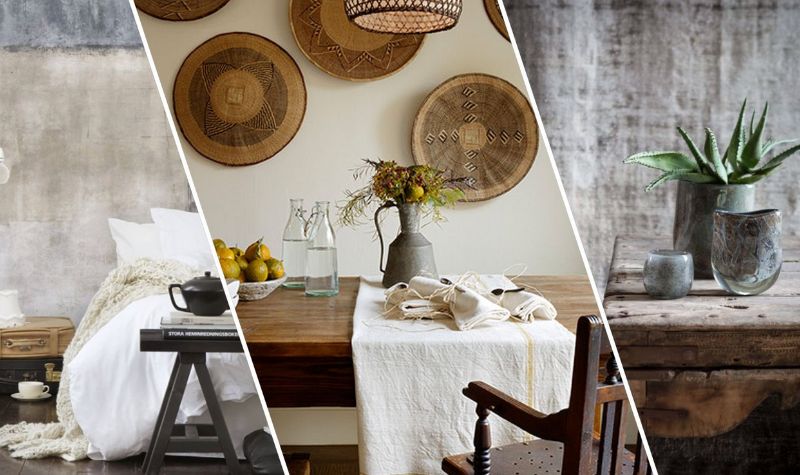
Wabi-Sabi is a philosophy that finds beauty in things that are not perfect and that don’t last forever. Wabi values the quiet beauty of simple things that don’t last. Sabi appreciates the beauty that comes with age and wear. Together, they emphasize authenticity over looking perfect. This cultural concept has emerged as a reaction to lavish and ornate design trends.
Wabi sabi is a philosophy that values simplicity, authenticity, and acceptance of life’s complexities. It’s built on three realities: nothing lasts forever, nothing is fully complete, and nothing is perfect. This mindset encourages embracing imperfection, letting go of the pursuit of perfection, and finding beauty in life’s simplicity. Wabi sabi promotes a conscious choice of minimalism and appreciation for the present moment.
Key Features Of Wabi Sabi Interior Design
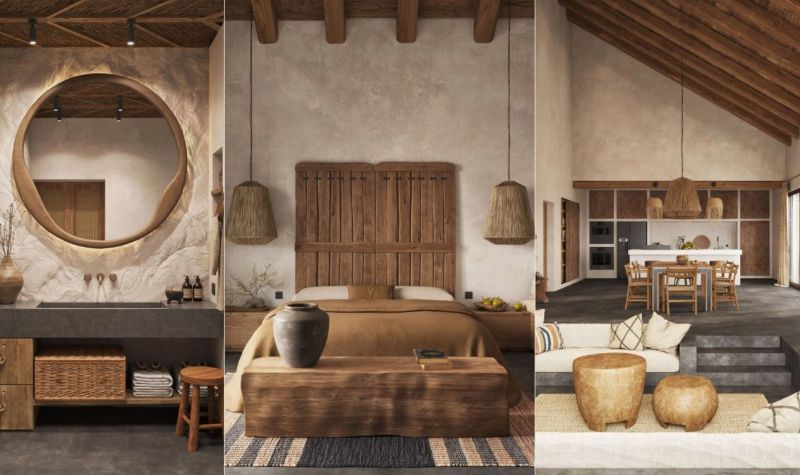
Wabi Sabi interior design values simplicity, natural materials, textures, uniqueness, a neutral color palette, meaningful and personal decor to create a clutter-free space. This approach creates a peaceful, authentic atmosphere that values simplicity and nature. Below is how to design a wabi sabi home by incorporating these key features.
1. Natural Materials
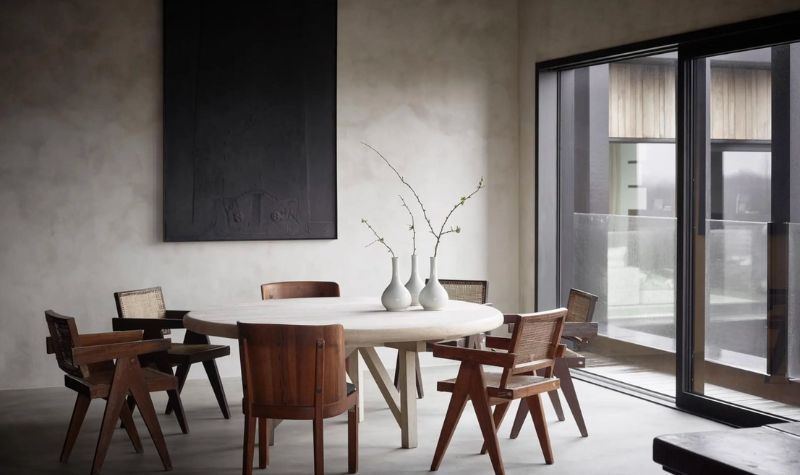
Wabi-sabi interior design mainly focuses on using natural, sustainable materials that are gentle on the environment. Consider incorporating materials such as stone, wood, clay, and natural fibers to showcase their natural beauty. Textured walls, unpolished stone floors, natural wood, wooden tables with visible grain and knots, and organic imperfections create a richer, more authentic atmosphere and a sense of warmth and depth to the space.
2. Incorporate Imperfections
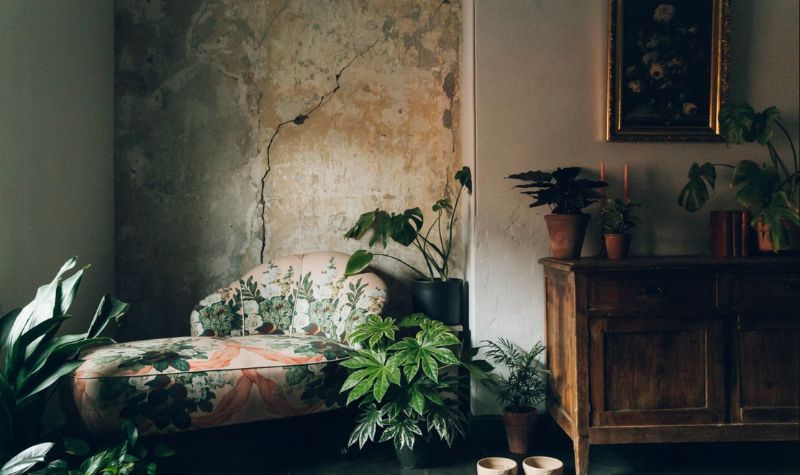
Wabi-sabi is all about embracing the beauty of imperfections and celebrating what’s natural and real. Imperfections like cracks, scratches, wear, uneven textures, fades, nicks, and chips are seen as character, not flaws.
These marks tell a story and add depth and authenticity to our spaces. You can add elements like a quilt with frayed edges, a wooden table with knots and grooves, or a ceramic piece with cracked glaze.
3. Calm Neutral Colors
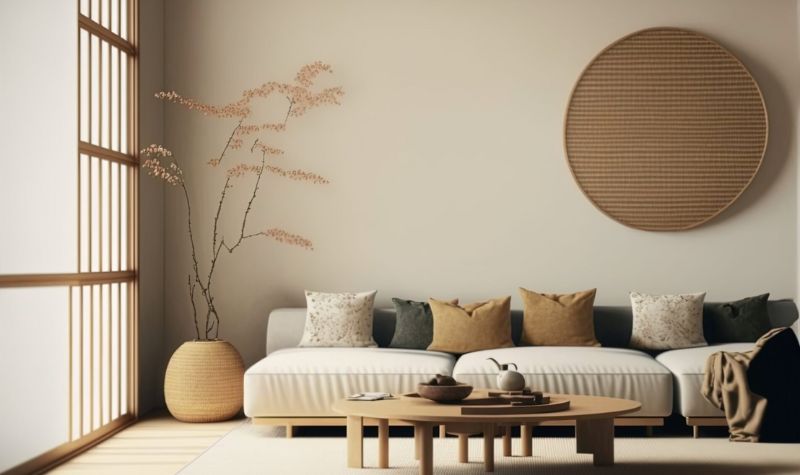
A wabi sabi interior design features neutral, earthy color palettes that showcase the natural beauty of materials and textures. The gentle hues like whites, taupes, beiges, blacks, creams, browns, soft clay, sage, muted greens, terra cotta, olives, muted greys, and dusty rose are a perfect fit for wabi sabi.
These calming tones create a sense of peace, harmony, balance, and connection to nature, highlighting the textures and imperfections of materials. They also evoke the timelessness of stone and weathered wood.
4. Textures
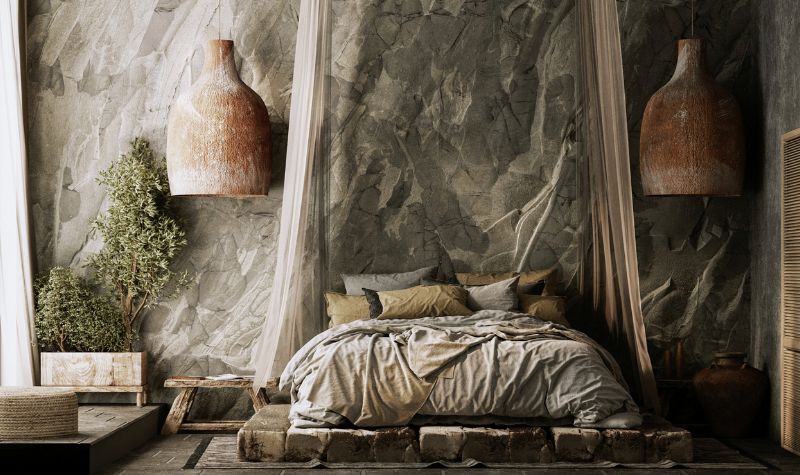
Wabi sabi interiors incorporate a variety of natural materials that engage the senses. These textures sometimes take center stage in the home, adding depth and personality to each room. Rustic textures, including pine wood with imperfections, natural stone, and timber with knots and burls, can be selected for the kitchen.
Rough linen, limewash paint, reclaimed wood, patina, smooth or rough-cut stones, weathered wood, linen drapes, and handcrafted ceramics add depth and character to the space. A satin finish can also enhance the natural beauty of these textures. Just try to avoid glossy surfaces.
5. Personal Touches
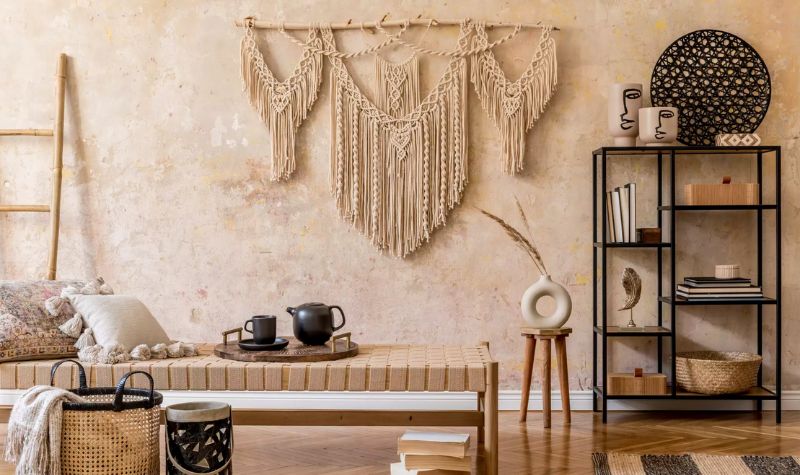
A wabi sabi interior style offers you a lot of creative freedom. You can create a space that reflects your personal style. You can add meaningful, sentimental, and authentic pieces that spark joy and carry stories and history. These items bring a sense of depth, character, and authenticity to a space, making it feel more personal.
6. Minimalist Design
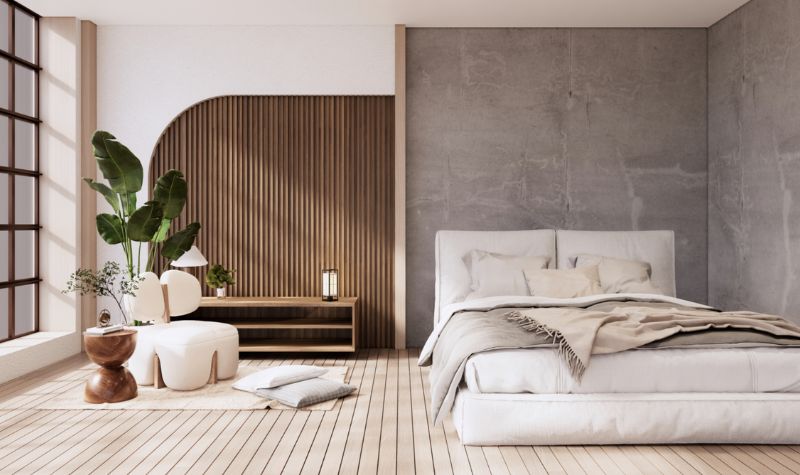
If you don’t know what is wabi sabi interior design and where to start it, consider a minimalist design approach first. Wabi Sabi design promotes serenity and calm through simplicity. Just strip away all the non-essentials to let the meaningful elements shine. Carefully curate items that serve both function and aesthetics.
Eliminate clutter, focus on purposeful pieces, and keep it organized to create a serene and minimalist space that feels intentional and inviting. For example, arrange furniture elements properly while incorporating multi-functional objects and clever storage items. Consider open floor plans to maximize natural light during home renovation.
7. Lighting
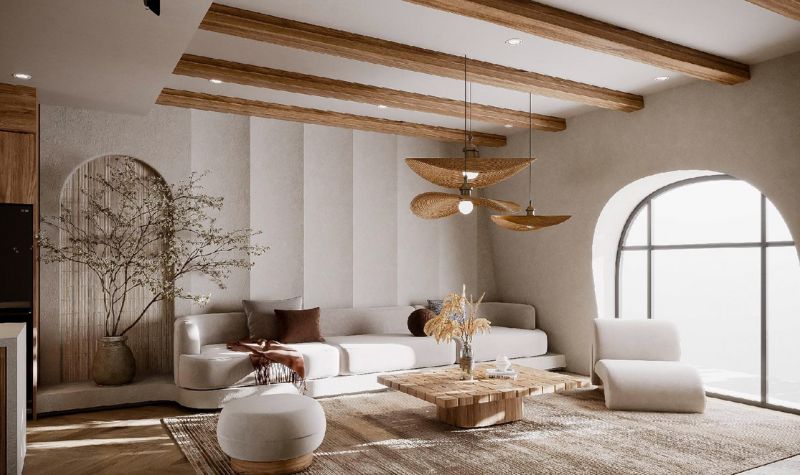
In a Wabi Sabi interior, lighting is also a key element as it sets the emotional tone. Try incorporating natural light and simple fixtures like ceiling lamps to create a soft, serene ambiance inside. Sheer window coverings can help you filter daylight and create soft shadows. Additionally, lighting’s correlated color temperature highlights the overall aesthetics.
8. Incorporate Linen
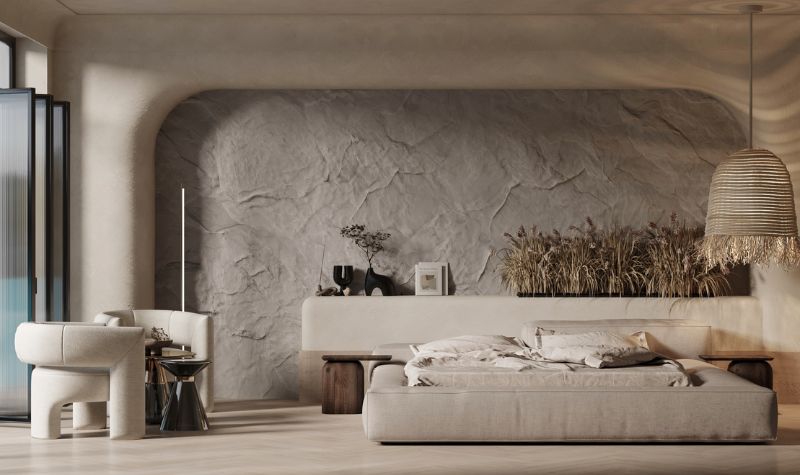
Wabi sabi design is about having comfort in the little things. Incorporating soft, washed linens is a perfect example to add a soft, lived-in touch to the space. From rippling linen drapes and rumpled linens in open shelves to rough linen throws and wrinkled linens, these materials evoke a sense of coziness and authenticity. While its tactile quality creates a warm, relaxed atmosphere.
9. Vintage Decor Items
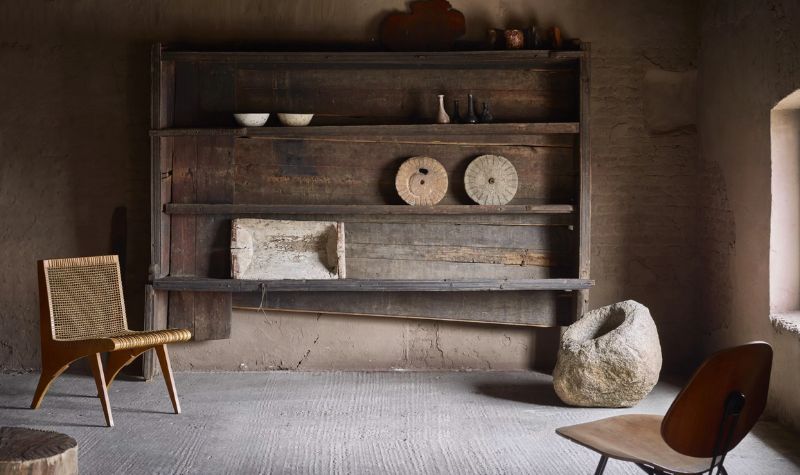
Wabi sabi style interiors are usually decorated with vintage elements to add a layer of history and character to the space. Consider incorporating these vintage items, like a wooden rocking chair, a distressed wooden side table, a worn leather sofa, a vintage Moroccan rug, a standing mirror, a vintage metal lantern, or a reclaimed wood shelving unit with visible nail holes and imperfections.
These elements are not just a focal point in vintage interior design but also in a wabi sabi interior design, carrying stories.
10. Greenery
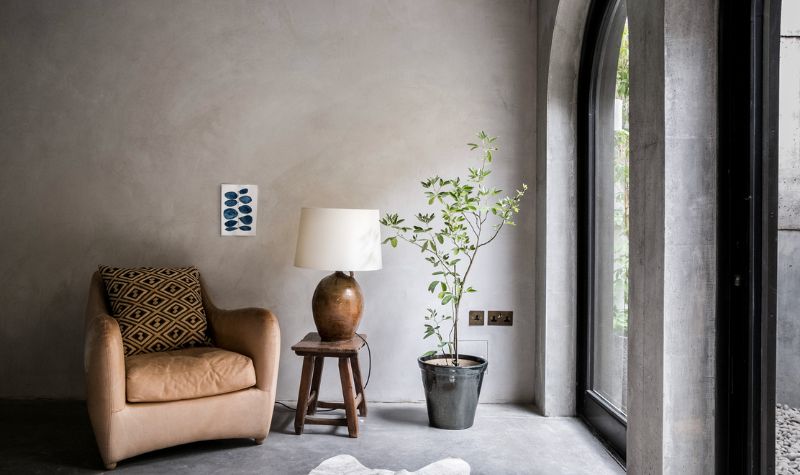
Having plants in your home doesn’t just add a touch of life and beauty but also gives a sense of calmness. These deep green and olive green leaves bring a pop of color and natural charm to your space.
You can place indoor plants like rattan, potted, or even bamboo to complement the wabi sabi aesthetic. As these plants grow, change, and evolve, they add a dynamic, organic element to the space.
11. Asymmetric Approach
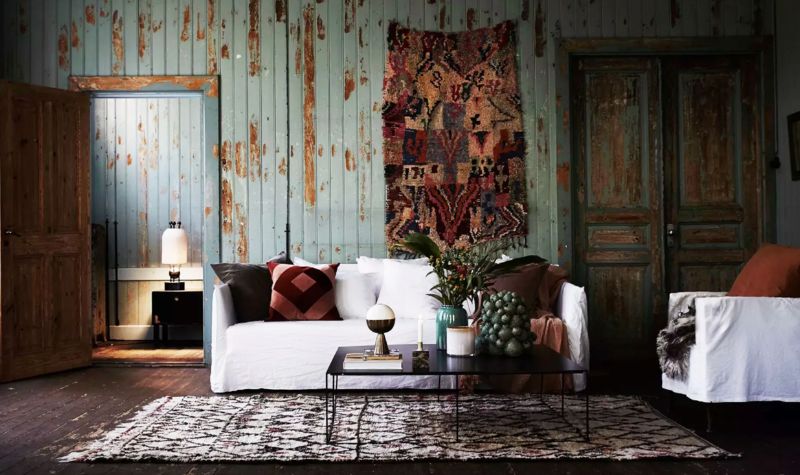
The beauty of wabi sabi architecture lies in its asymmetric approach and irregularity. The asymmetrical compositions and subtle imperfections add character and uniqueness to the space. It’s about embracing what’s natural and real while rejecting the idea of perfection. For example, off-center arrangements, imperfect, handmade, or weathered things, and mismatched elements create a warm and genuine atmosphere.
12. Handcrafted Objects
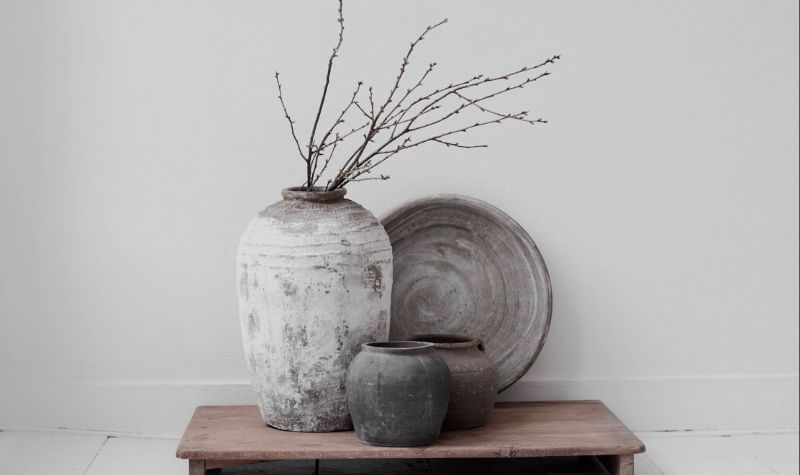
Choosing handmade objects is perfect for wabi sabi homes because they’re one-of-a-kind and full of character. These handcrafted objects have a unique character that other new or mass-produced items don’t have. The distinctive shapes of these custom or made-to-order pieces, such as a hand-woven rug, handmade ceramics, or a handmade vase, add character, making each piece truly one-of-a-kind.
13. Furniture
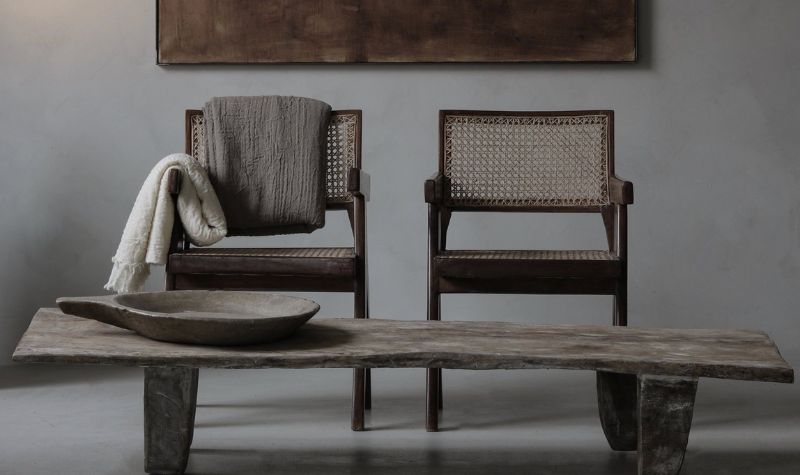
Wabi sabi decor features rustic furniture items with clean lines and earthy tones like white, beige, cream, taupe, sage, and gray to create a serene atmosphere. You can place brutalist furniture elements with exposed structures and the inherent texture of materials like tree trunks. The organic, raw look of these brutalist furniture pieces can also add to the space’s unique character.
14. Painted & Metal Finishes
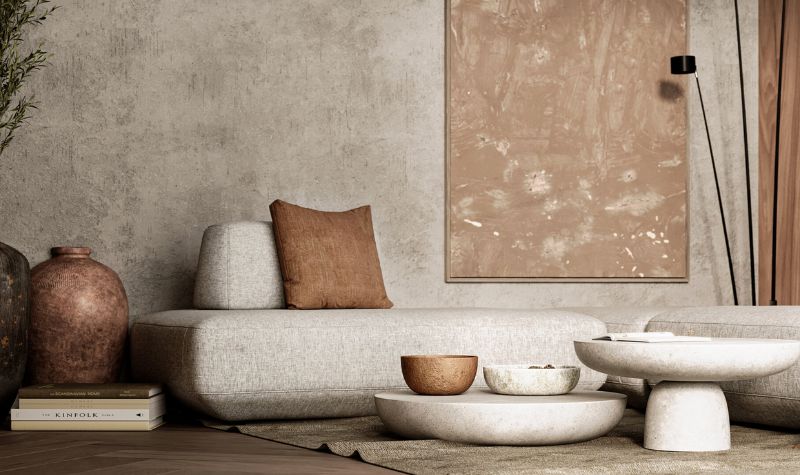
It is compulsory to give a worn, aged look to your space by incorporating painted and metal finishes. This weathered look adds character and depth. Distressed finishes, metal touches, woven glass, and uneven paintwork can work wonders. As these materials age, they develop character.
Metal finishes like limewash paint, copper, brass, bronze, and patina add a unique charm. The worn look and faded edges of tables, cabinets, and other furniture elements create a sense of history. You can also use objects that age naturally, like worn pottery or tarnished metal, to celebrate the beauty of aging and imperfection.
15. Open Shelves
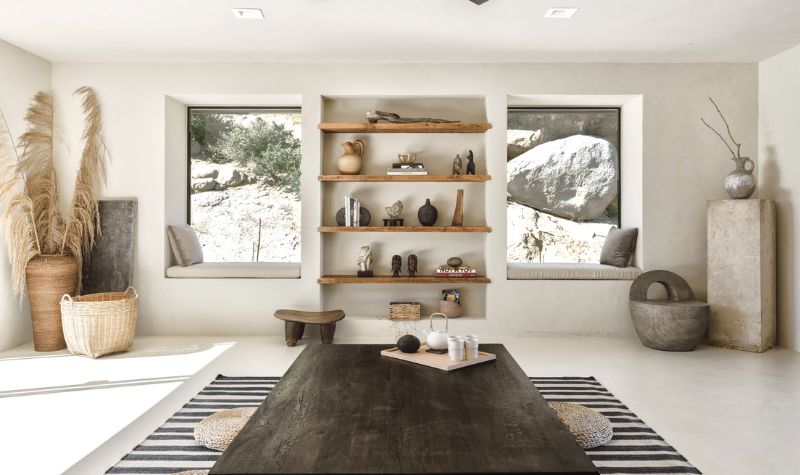
Having open shelving is also a great feature in a wabi-sabi interior design. These shelves are also very useful if you don’t have and are plans for your kitchen renovation. Open shelves are a great way to showcase imperfect, genuine pieces, allowing your belongings, such as handmade pottery, rumpled linens, personal items, and wildflowers, to stand out in the room. However, you can also choose secret storage solutions if you don’t want open shelving.
16. Indoor Outdoor Transition
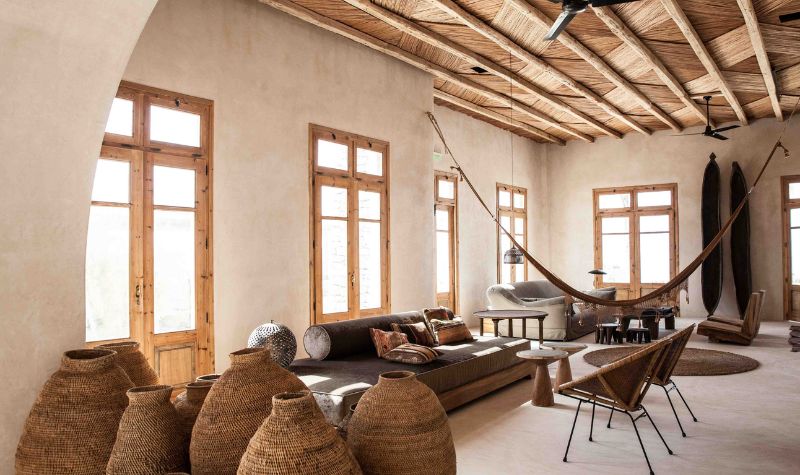
Most of the wabi sabi homes have a beautiful indoor-outdoor transition, showcasing a strong connection to nature. Carefully planned windows, terraces, courtyards, and patios can bring the outdoors in during your home renovation. The natural landscape becomes a living part of the space, enhancing the home’s serenity and beauty.
Final Thoughts
Wabi sabi interior designs are all about finding beauty in imperfect things. In other words, liking things that are a little worn out or not perfect. These small imperfections with an asymmetric approach are what make a place special.
I hope the above guide regarding what is wabi-sabi interior design will be helpful for you. If you still need some assistance, simply comment down and the experts at smartfixhome.com will be there for you.
Frequently Asked Questions (FAQs)
What Is A Wabi-Sabi Interior Design?
Wabi-Sabi is a Japanese design style that values imperfection and simplicity. It finds beauty in things that are worn, aged, and natural. Instead of aiming for perfection, it celebrates the unique marks and flaws that come with time.
What Are The Key Elements Of Wabi-Sabi Design?
The key elements of a wabi-sabi interior design include earthy color tones, natural materials, embracing imperfections, a minimalistic design approach with uncluttered spaces, and handmade objects.
How Can I Incorporate Wabi-Sabi Into My Home?
Start by choosing a muted color scheme for your space. Choose functional furniture and decor items made from natural materials, and don’t shy away from pieces that show signs of age or wear. Keep your space decluttered and focus on items that have personal meaning.
What Colors Are Commonly Used In Wabi-Sabi Interiors?
Wabi-Sabi interiors often feature earthy and muted colors such as white, beige, muted gray, taupe, soft blue, dusty rose, and muted green.
What Are The Three Principles Of Wabi-Sabi?
The three principles of wabi sabi are imperfection, impermanence, and incompleteness. In simple words, wabi sabi focuses on things don’t have to be perfect, nothing lasts forever, and sometimes things are better when they’re not finished.


